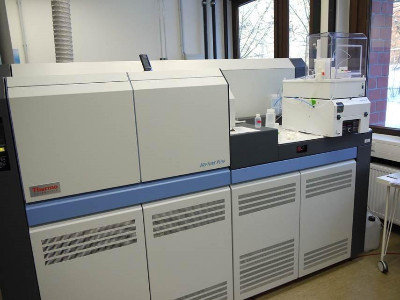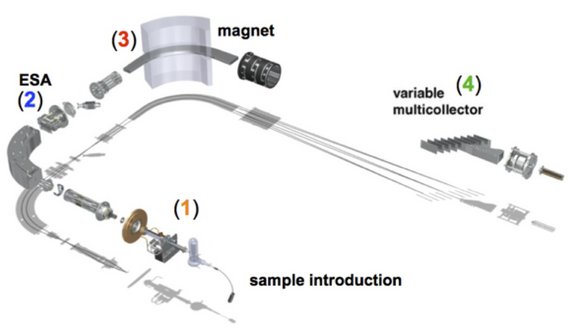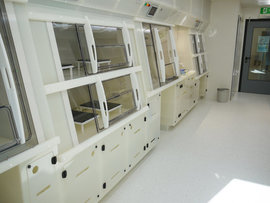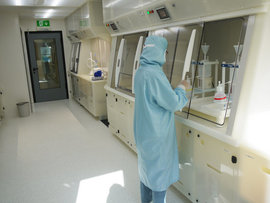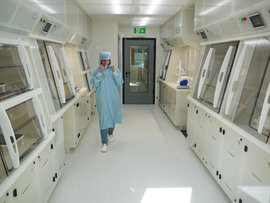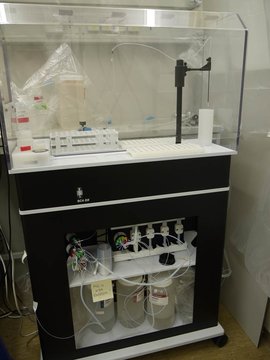Page path:
- Marine Isotope Geochemistry Group
- Facilities
Facilities
Instrumentation
ThermoScientific Neptune Plus multi-collector ICP-MS
at the Institute for Chemistry and Biology of the Marine Environment (ICBM), University of Oldenburg
The Max Planck research group for Marine Isotope Geochemistry uses a ThermoScientific Neptune Plus multi-collector inductively-coupled plasma mass spectrometer (MC-ICP-MS) for the precise analysis of isotope ratios of trace elements. The instrument is equipped with 9 Faraday detectors (8 of which are moveable) for the simultaneous analysis of up to 9 diferent masses, and a secondary electron multiplier (SEM) for the analysis of very low signal intensities.
The instrument is currently set up to routinely measure stable and radiogenic isotopes of the elements Nd, Sr, Pb and Si in seawater, porewaters, suspended particles and marine sediments.
at the Institute for Chemistry and Biology of the Marine Environment (ICBM), University of Oldenburg
The Max Planck research group for Marine Isotope Geochemistry uses a ThermoScientific Neptune Plus multi-collector inductively-coupled plasma mass spectrometer (MC-ICP-MS) for the precise analysis of isotope ratios of trace elements. The instrument is equipped with 9 Faraday detectors (8 of which are moveable) for the simultaneous analysis of up to 9 diferent masses, and a secondary electron multiplier (SEM) for the analysis of very low signal intensities.
The instrument is currently set up to routinely measure stable and radiogenic isotopes of the elements Nd, Sr, Pb and Si in seawater, porewaters, suspended particles and marine sediments.
Function
Prior to analysis, the element of interest is isolated from interfering elements using ion exchange resins in the clean lab. Via a nebulizer, the dissolved sample is introduced into an argon plasma, where it is ionized (1). The transfer optics accelerate and focus the ion beam. The electrostatic analyzer (ESA) (2) creates an electric field, which focuses ions of different energies, further increasing the sensitivity. The magnet (3) separates the ions according to their mass-to-charge ratio and the mass-resolved beams are each directed into one of the collectors (4) at the same time. Such simultaneous detection results in a very high precision for the determination of the isotope ratios (relative standard deviation ≤ 0.001 %).
Clean lab
am Institut für Chemie und Biologie des Meeres (ICBM)
The clean lab of the group for Marine Isotope Geochemistry is metal-free and (nearly) particle-free. This allows the processing of seawater and sediment samples for the analysis of trace element isotopes and concentrations. In order to analyse trace elements in the ocean (concentrations in the ppb (10-9)-range), they have to be preconcentrated from seawater and the elements of interest need to be isolated from other elements that would interfere during isotope analysis on the mass spectrometer. The smallest contamination of our samples through dust particles or metals, which contain much higher concentrations of these elements, would mask the natural concentrations of these elements in seawater and therefore distort the results.
